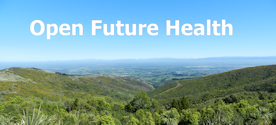

Humans Have Always Used Our Lipid Metabolism and Our Glucose Metabolism.
But before the 1920's few people knew that. When people have plenty to eat they are usually using the glucose metabolism. When people are on "short rations" they use their lipid metabolism, they feed on their own fat and the body produces ketones as fuel. This is called ketosis.
And since the 1920's it's often been thought of as "Starvation Ketosis." So people have avoided it's study, except for treating epilepsy, and the "special case" of breast feeding babies.
Ketosis is easily induced on a very low carbohydrate diet, there is no starvation, in fact no hunger at all. That's what we have to learn about. Once you have that new knowledge you need to decide, if for yourself this is a tool to use now, a tool to use sometimes, a tool to use all the time, or perhaps you'll choose not to use it after all.
There is an enormous difference between a low carbohydrate diet as defined by Stellenbosch University and the very low carbohydrate diet the Banting diet tries to create. The difference is ketosis. The Stellenbosch University low carbohydrate diet avoids ketosis, and the Banting very low carbohydrate diet embraces Ketosis. There is a world of difference and that is partly what's a stake in Dr Timothy Noakes' trial. The two parties appear to use the same language, but the are talking about different things entirely.
What we eat and the social conventions of eating have always been a topic of controversy.
500 years ago in Britain, most people only ate once a day. In human history people spent a great deal of each day ensuring the food supply. Food was what you could find to eat during the day. There were feast days, and days when there was very little. A bird, a rabbit, a fish was desirable, only the rich could kill their own livestock. Gardens were an exception. Access to land and river and forest was the means of survival.
The human body is adapted to uncertainty of food supply. That's what's changed in the last 100 years in developed countries. We eat every day. Sometimes eight times a day. We are not all wealthy, and too many of us buy the cheapest food available. Carbohydrates, potatoes, bread, pasta and rice, and we suffer because of that.
![]() For at least 147 years we've chosen to not know, how the Inuit and other peoples obtain energy for their metabolism. Social or cultural barriers, prevent us from seeing the nutritional science demonstrated in the diets of nomadic or hunter gathering peoples. We just assume that our diet is "better."
For at least 147 years we've chosen to not know, how the Inuit and other peoples obtain energy for their metabolism. Social or cultural barriers, prevent us from seeing the nutritional science demonstrated in the diets of nomadic or hunter gathering peoples. We just assume that our diet is "better."
When we choose not to listen to people who would tell us that "our dietary practices" are not healthy, we trap ourselves in a tradition that's causing us to be sick for years, and to die early. We claim to be eating an "evidence based" diet, but we choose to ignore much of the evidence we have.
Part One: An introduction (About 20 minutes)
Human Metabolism - Carbohydrates and Fats fuel the body.
By what Authority do I Speak? I have none.
John Veitch - Educator by profession
A Little History - William Banting - "Letter on Corpulence"
The Dietary Guidelines - The Best Human Diet?
Dietary Confusion Fat pigs and Slim People
Dr Aleš Hrdlička, - Plains Indians, USA
Elmer McCollum - Dr Vitamin
Real Paleo Diets Not possible in modern times.
Lt. Frederic Schwatka - Inuit Diets - 147 years ago
Vilhjalmur Stefansson - Bellevue Hospital Study
Weston Price - American Dentist
George Vernon Mann - The Masai in Kenya, 1962